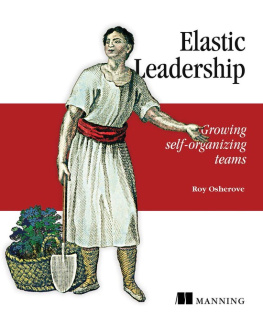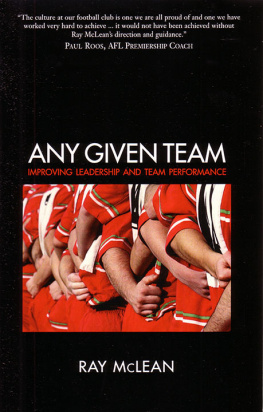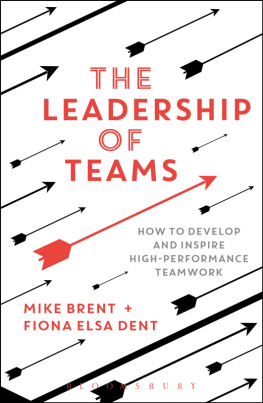Roy Osherove - Elastic Leadership: Growing Self-Organizing Teams
Here you can read online Roy Osherove - Elastic Leadership: Growing Self-Organizing Teams full text of the book (entire story) in english for free. Download pdf and epub, get meaning, cover and reviews about this ebook. year: 2016, publisher: Manning Publications, genre: Business. Description of the work, (preface) as well as reviews are available. Best literature library LitArk.com created for fans of good reading and offers a wide selection of genres:
Romance novel
Science fiction
Adventure
Detective
Science
History
Home and family
Prose
Art
Politics
Computer
Non-fiction
Religion
Business
Children
Humor
Choose a favorite category and find really read worthwhile books. Enjoy immersion in the world of imagination, feel the emotions of the characters or learn something new for yourself, make an fascinating discovery.
- Book:Elastic Leadership: Growing Self-Organizing Teams
- Author:
- Publisher:Manning Publications
- Genre:
- Year:2016
- Rating:3 / 5
- Favourites:Add to favourites
- Your mark:
Elastic Leadership: Growing Self-Organizing Teams: summary, description and annotation
We offer to read an annotation, description, summary or preface (depends on what the author of the book "Elastic Leadership: Growing Self-Organizing Teams" wrote himself). If you haven't found the necessary information about the book — write in the comments, we will try to find it.
DESCRIPTION
One day it happensa big promotion to manager, technical team leader, architect, or scrum master puts an inexperienced leader in charge of a team that is looking for guidance. Personality clashes need to be worked out. Heated debates need to be mediated, and the team is constantly putting out fires instead of doing the right things, the right way. Everyone wants to do the right thing, but nobody seems to know how. This is where leaders can get stuck and need the guidance that elastic leadership offers. This framework and philosophy of leadership can help as they strive to manage day-to-day and long term challenges, and create the elusive self-organizing team by coming to understand that their leadership needs to change based on the needs and goals of the team.
Elastic Leadership offers a set of values, techniques, and practices to consider in current or future leadership roles. First, it looks at the elastic leadership philosophya way of navigating the leadership world that provides a moral compass when making decisions, large and small. It includes the leader manifesto, and the elastic leadership framework phases (survival mode, learning, and self organization). Readers will discover a set of techniques and practices the author has acquired along his own journey that will complement and support their moral compass. Next, the book provides a set of thoughts and notes from other leaders, with accompanying annotations from the author about how they fit into the overall framework and compass. KEY FEATURESBased on real-life experiences from the software world Shows how to grow effective self-organizing teamsExplains how to create vision and purpose for day to day actions
AUDIENCE
This book is for anyone with a year or more of experience working with a team of any kind, and especially technical people, either as a lead or team member.
ABOUT THE TECHNOLOGY
Elastic leadership provides a set of values, techniques, and practices to consider in current or future leadership roles. The elastic leadership philosophy offers a way of navigating the leadership world that will provide a moral compass when making decisions, large and small.
Roy Osherove: author's other books
Who wrote Elastic Leadership: Growing Self-Organizing Teams? Find out the surname, the name of the author of the book and a list of all author's works by series.









 Recognizing the importance of preserving what has been written, it is Mannings policy to have the books we publish printed on acid-free paper, and we exert our best efforts to that end. Recognizing also our responsibility to conserve the resources of our planet, Manning books are printed on paper that is at least 15 percent recycled and processed without the use of elemental chlorine.
Recognizing the importance of preserving what has been written, it is Mannings policy to have the books we publish printed on acid-free paper, and we exert our best efforts to that end. Recognizing also our responsibility to conserve the resources of our planet, Manning books are printed on paper that is at least 15 percent recycled and processed without the use of elemental chlorine.